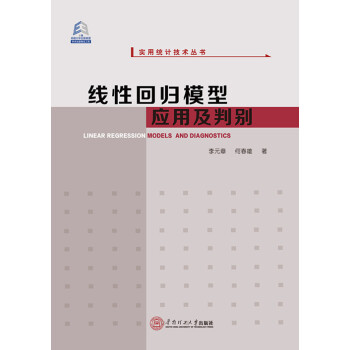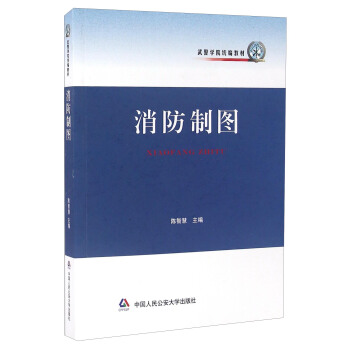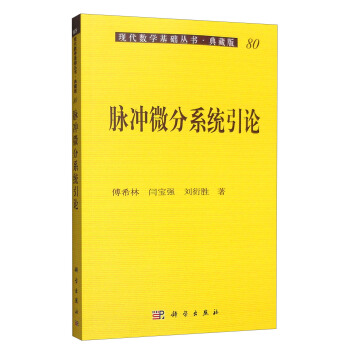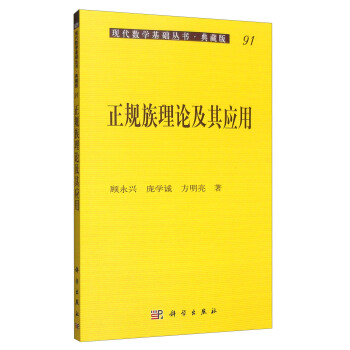![国外数学名著系列50(续一 影印版) 动力系统5:分歧理论和突变理论 [Dynamical Systems V: Bifurcation Theory and Catastrophe Theory]](https://pic.windowsfront.com/11896200/5704d4acNb998c123.jpg)

具体描述
内容简介
Both bifurcation theory and catastrophe theory are studies of smooth systems,tbcusing on properties that seem manifestly non-smooth. Bifurcations are sudden changes that occur in a system as one or more parameters are varied.Catastrophe theory is accurately described as singularity theory and its applications.These two theories are important tools in the study of differential equations and of related physical systems.Analyzing the bifurcations or singularities of a system provides useful qualitative information about its behaviour. The authors have written this book with reffeshing clarity.Theexposition is masterful,with penetrating insights.
内页插图
目录
PrefaceChapter 1. Bifurcations of Equilibria
1. Families and Deformations
1.1. Families of Vector Fields
1.2. The Space of Jets
1.3. Sard's Lemma and Transversality Theorems
1.4. Simplest Applications: Singular Points of Generic Vector Fields
1.5. Topologically Versal Deformations
1.6. The Reduction Theorem
1.7. Generic and Principal Families
2. Bifurcations of Singular Points in Generic One-Parameter Families
2.1 Typical Germs and Principal Families
2.2. Soft and Hard Loss of Stability
3. Bifurcations of Singular Points in Generic Multi-Parameter Families with Simply Degenerate Linear Parts
3.1. Principal Families
3.2. Bifurcation Diagrams of the Principal Families (3-+) in Table 1
3.3. Bifurcation Diagrams with Respect to Weak Equivalence and Phase Portraits of the Principal Families (4-+) in Table 1
4. Bifurcations of Singular Points of Vector Fields with a Doubly-Degenerate Linear Part
4.1. A List of Degeneracies
4.2. Two Zero Eigenvalues
4.3. Reductions to Two-Dimensional Systems
4.4. One Zero and a Pair of Purely Imaginary Eigenvalues
4.5. Two Purely Imaginary Pairs
4.6. Principal Deformations of Equations of Difficult Type in Problems with Two Pairs of Purely Imaginary Eigenvalues (Following Zolitdek)
5. The Exponents of Soft and Hard Loss of Stability
5.1. Definitions
5.2. Table of Exponents
Chapter 2. Bifurcations of Limit Cycles
1. Bifurcations of Limit Cycles in Generic One-Parameter Families
1.1. Multiplier I
1.2. Multiplier-1 and Period-Doubling Bifurcations
1.3. A Pair of Complex Conjugate Multipliers
1.4. Nonlocal Bifurcations in One-Parameter Families of Diffeomorphisms
1.5. Nonlocal Bifurcations of Periodic Solutions
1.6. Bifurcations Resulting in Destructions of Invariant Tori
2. Bifurcations of Cycles in Generic Two-Parameter Families with an
Additional Simple Degeneracy
2.1. A List of Degeneracies
2.2. A Multiplier+1or-1 with Additional Degeneracy in the Nonlinear Terms
2.3. A Pair of Multipliers on the Unit Circle with Additional Degeneracy in the Nonlinear Terms
3. Bifurcations of Cycles in Generic Two-Parameter Families with Strong Resonances of Orders q≠4
3.1. The Normal Form in the Case of Unipotent Jordan Blocks
3.2. Averaging in the Seifert and the M6bius Foliations
3.3. Principal Vector Fields and their Deformations
3.4. Versality of Principal Deformations
3.5. Bifurcations of Stationary Solutions of Periodic Differential Equations with Strong Resonances of Orders q≠4
4. Bifurcations of Limit Cycles for a Pair of Multipliers Crossing the
Unit Circle at±i
4.1. Degenerate Families
4.2. Degenerate Families Found Analytically
4.3. Degenerate Families Found Numerically
4.4. Bifurcations in Nondegenerate Families
4.5. Limit Cycles of Systems with a Fourth Order Symmetry
5. Finitely-Smooth Normal Forms of Local Families
5.1. A Synopsis of Results
5.2. Definitions and Examples
5.3. General Theorems and Deformations of Nonresonant Germs
5.4. Reduction to Linear Normal Form
5.5. Deformations of Germs of Diffeomorphisms of Poincare Type
5.6. Deformations of Simply Resonant Hyperbolic Germs
5.7. Deformations of Germs of Vector Fields with One Zero Eigenvalue at a Singular Point
5.8. Functional Invariants of Diffeomorphisms of the Line
5.9. Functional Invariants of Local Families of Diffeomorphisms
5.10. Functional Invariants of Families of Vector Fields
5.11. Functional Invariants of Topological Classifications of Local Families of Diffeomorphisms of the Line
6. Feigenbaum Universality for Diffeomorphisms and Flows
6.1. Period-Doubling Cascades
6.2. Perestroikas of Fixed Points
6.3. Cascades of n-fold Increases of Period
6.4. Doubling in Hamiltonian Systems
6.5. The Period-Doubling Operator for One-Dimensional Mappings
6.6. The Universal Period-Doubling Mechanism for Diffeomorphisms
Chapter 3. Nonlocal Bifurcations
1. Degeneracies of Codimension 1. Summary of Results
1.1. Local and Nonlocal Bifurcations
1.2. Nonhyperbolic Singular Points
1.3. Nonhyperbolic Cycles
1.4. Nontransversal Intersections of Manifolds
1.5. Contours
1.6. Bifurcation Surfaces
1.7. Characteristics of Bifurcations
1.8. Summary of Results
2. Nonlocal Bifurcations of Flows on Two-Dimensional Surfaces
2.1. Semilocal Bifurcations of Flows on Surfaces
2.2. Nonlocal Bifurcations on a Sphere: The One-Parameter Case .
2.3. Generic Families of Vector Fields
2.4. Conditions for Genericity
2.5. One-Parameter Families on Surfaces different from the Sphere
2.6. Global Bifurcations of Systems with a Global Transversal Section on a Torus
2.7. Some Global Bifurcations on a Klein bottle
2.8. Bifurcations on a Two-Dimensional Sphere: The Multi-Parameter Case
2.9. Some Open Questions
3. Bifurcations of Trajectories Homoclinic to a Nonhyperbolic Singular Point
3.1. A Node in its Hyperbolic Variables
3.2. A Saddle in its Hyperbolic Variables: One Homoclinic Trajectory
3.3. The Topological Bernoulli Automorphism
3.4. A Saddle in its Hyperbolic Variables: Several Homoclinic Trajectories
3.5. Principal Families
4. Bifurcations of Trajectories Homoclinic to a Nonhyperbolic Cycle
4.1. The Structure of a Family of Homoclinic Trajectories
4.2. Critical and Noncritical Cycles
4.3. Creation of a Smooth Two-Dimensional Attractor
4.4. Creation of Complex Invariant Sets (The Noncritical Case) ...
4.5. The Critical Case
4.6. A Two-Step Transition from Stability to Turbulence
4.7. A Noncompact Set of Homoclinic Trajectories
4.8. Intermittency
4.9. Accessibility and Nonaccessibility
4.10. Stability of Families of Diffeomorphisms
4.11. Some Open Questions
5. Hyperbolic Singular Points with Homoclinic Trajectories
5.1. Preliminary Notions: Leading Directions and Saddle Numbers
5.2. Bifurcations of Homoclinic Trajectories of a Saddle that Take Place on the Boundary of the Set of Morse-Smale Systems
5.3. Requirements for Genericity
5,4, Principal Families in R3 and their Properties
5.5. Versality of the Principal Families
5.6. A Saddle with Complex Leading Direction in R3
5.7. An Addition: Bifurcations of Homoclinic Loops Outside the Boundary of a Set of Morse-Smale Systems
5.8. An Addition: Creation of a Strange Attractor upon Bifurcation of a Trajectory Homoclinic to a Saddle
6. Bifurcations Related to Nontransversal Intersections
6.1. Vector Fields with No Contours and No Homoclinic Trajectories
6.2. A Theorem on Inaccessibility
6.3. Moduli
6.4. Systems with Contours
6.5. Diffeomorphisms with Nontrivial Basic Sets
6.6, Vector Fields in R3 with Trajectories Homoclinic to a Cycle
6.7. Symbolic Dynamics
6.8. Bifurcations of Smale Horseshoes
6.9. Vector Fields on a Bifurcation Surface
6.10. Diffeomorphisms with an Infinite Set of Stable Periodic Trajectories
7. Infinite Nonwandering Sets
7.1. Vector Fields on the Two-Dimensional Torus
7.2. Bifurcations of Systems with Two Homoclinic Curves of a Saddle
7.3. Systems with Feigenbaum Attractors
7.4. Birth of Nonwandering Sets
7.5. Persistence and Smoothness of Invariant Manifolds
7.6. The Degenerate Family and Its Neighborhood in Function Space
7.7. Birth of Tori in a Three-Dimensional Phase Space
8. Attractors and their Bifurcations
8.1. The Likely Limit Set According to Milnor (1985)
8.2. Statistical Limit Sets
8.3. Internal Bifurcations and Crises of Attractors
8.4. Internal Bifurcations and Crises of Equilibria and Cycles
8.5. Bifurcations of the Two-Dimensional Torus
Chapter 4. Relaxation Oscillations
1. Fundamental Concepts
1.1. An Example: van der Pors Equation
1.2. Fast and Slow Motions
1.3. The Slow Surface and Slow Equations
1.4. The Slow Motion as an Approximation to the Perturbed Motion
1.5. The Phenomenon of Jumping
2. Singularities of the Fast and Slow Motions
2.1. Singularities of Fast Motions at Jump Points of Systems with One Fast Variable
2.2. Singularities of Projections of the Slow Surface
2.3. The Slow Motion for Systems with One Slow Variable
2.4. The Slow Motion for Systems with Two Slow Variables
2.5. Normal Forms of Phase Curves of the Slow Motion
2.6. Connection with the Theory of Implicit Differential Equations
2.7. Degeneration of the Contact Structure
3. The Asymptotics of Relaxation Oscillations
3.1. Degenerate Systems
3.2. Systems of First Approximation
3.3. Normalizations of Fast-Slow Systems with Two Slow Variables for
3.4. Derivation of the Systems of First Approximation
3.5. Investigation of the Systems of First Approximation
3.6. Funnels
3.7. Periodic Relaxation Oscillations in the Plane
4. Delayed Loss of Stability as a Pair of Eigenvalues Cross the Imaginary Axis
4.1. Generic Systems
4.2. Delayed Loss of Stability
4.3. Hard Loss of Stability in Analytic Systems of Type 2
4.4. Hysteresis
4.5. The Mechanism of Delay
4.6. Computation of the Moment of Jumping in Analytic Systems
4.7. Delay Upon Loss of Stability by a Cycle
4.8. Delayed Loss of Stability and “Ducks” .
5. Duck Solutions
5.1. An Example: A Singular Point on the Fold of the Slow Surface
5.2. Existence of Duck Solutions
5.3. The Evolution of Simple Degenerate Ducks
5.4. A Semi-local Phenomenon: Ducks with Relaxation
5.5. Ducks in R3 and Rn
Recommended Literature
References
Additional References
前言/序言
用户评价
这本书的装帧和设计实在令人眼前一亮,纸张的质感非常考究,拿在手里沉甸甸的,一看就是精心制作的。封面设计虽然朴素,却透着一种经典的气质,让人联想到那些沉淀了岁月味道的学术经典。内页的排版也相当清晰,字迹工整,虽然是影印版,但细节处理得很到位,阅读起来没有感到明显的吃力。对于我这种偏爱实体书、享受翻阅过程的读者来说,能有这样一套制作精良的系列图书,无疑是一种享受。它不仅仅是知识的载体,更像是一件值得收藏的艺术品。每一次把它从书架上取下来,抚摸着封面和书脊,都能感受到出版方在制作上的用心和诚意。这样的书籍,不仅适合在书房里静心研读,也适合作为学术交流时的摆设,彰显出一种低调的专业品味。
评分这本书的购买过程和后期的使用反馈,都体现出一种专业的服务态度。从物流的包装到书籍的入库,都体现出对专业书籍的尊重。在实际使用中,由于是影印本,一些早期文献中常见的字体或图表清晰度问题是不可避免的,但这套书的影印质量已经控制在一个非常高的水平,足以满足专业阅读的需求。更重要的是,这套书的出现,填补了国内在这一细分领域内系统性经典教材的空白。它代表了一种对学术严谨性的坚持和对知识传承的责任感,让我们可以更便捷地获取到这些宝贵的思想财富,是每一位致力于数学深度研究的人都应该珍藏的资料。
评分从学术价值的角度来看,这套系列的选择眼光非常独到。能够被收入“国外数学名著系列”的,无一不是在各自领域内具有里程碑意义的作品。这套书的出版,不仅仅是对经典的回溯和致敬,更是对当代研究方向的一种有力引导。它清晰地勾勒出了某一学科体系的骨架和脉络,让初学者能够迅速抓住重点,也让资深研究者能够温故知新,发现以往可能忽略的细微之处。对于构建一个完整的知识体系而言,这种自上而下的系统性梳理,远比零散地阅读各种期刊论文来得有效。它提供的是一个宏观的地图,让你在探索具体细节时,不至于迷失方向。
评分阅读体验上,这本书的整体氛围是严谨而充满挑战性的。它不像通俗读物那样轻松愉快,而是需要读者投入大量的时间和精力去消化吸收。每当遇到一个复杂的定理或者深入的论证时,我都会不自觉地停下来,反复揣摩作者的思路和逻辑推导过程。这种“慢读”的过程,虽然耗费心神,但每攻克一个难点,内心获得的成就感是无可比拟的。它迫使我不仅要记住公式,更要理解公式背后的数学直觉和构建逻辑。这种强迫性的深度思考,对于锻炼一个数学工作者的思维习惯至关重要。与其说是阅读,不如说是一场与智者跨越时空的对话,充满了思想的碰撞与激发。
评分这本书的引入,对于国内数学爱好者和研究者来说,无疑是一股及时的清流。在浩如烟海的专业文献中,能够系统、原汁原味地引进国外经典著作,是拓宽视野、提升理论深度的重要途径。我尤其欣赏这种坚持“原汁原味”的态度,虽然语言上可能需要一定的基础,但这恰恰保证了数学思想的精确性和严谨性,避免了翻译过程中可能出现的歧义和失真。它像是一扇通往国际前沿研究的窗户,让我们能够直接接触到那些奠基性的思想和概念,而不是通过二手资料的转述。对于想要深入理解某一领域精髓的人来说,阅读原著是不可或缺的一步,而这套影印版系列,恰好满足了这一迫切需求,搭建起了一座坚实的桥梁。
相关图书
本站所有内容均为互联网搜索引擎提供的公开搜索信息,本站不存储任何数据与内容,任何内容与数据均与本站无关,如有需要请联系相关搜索引擎包括但不限于百度,google,bing,sogou 等
© 2025 book.coffeedeals.club All Rights Reserved. 静流书站 版权所有



![中国安全生产年鉴(2014) [China's Work Safety Yearbook] pdf epub mobi 电子书 下载](https://pic.windowsfront.com/11900780/57038d4aN4b65f5bd.jpg)




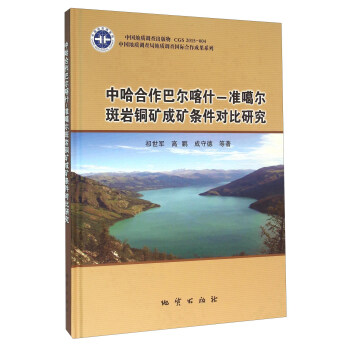
![量子物理的非常规方法(英文版) [Uncommon Paths in Quantum Physics] pdf epub mobi 电子书 下载](https://pic.windowsfront.com/11915537/573ee14cN51b7b7e6.jpg)

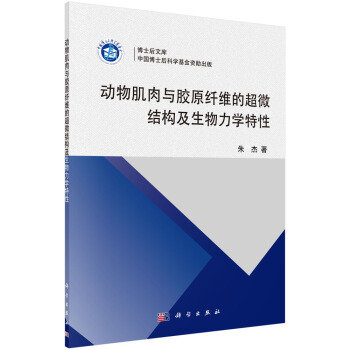
![国外数学名著系列(影印版)31:递归可枚举集和图灵度 可计算函数与可计算生成集研究 [Recursively Enumerable Sets and Degrees:A Study of Computable Functions and Computably Generated Sets] pdf epub mobi 电子书 下载](https://pic.windowsfront.com/11918288/57431b98N8363819d.jpg)
![国外数学名著系列(影印版)33:线性微分方程的伽罗瓦理论 [Galois Theory of Linear Differential Equations] pdf epub mobi 电子书 下载](https://pic.windowsfront.com/11918310/57431b99Neb5b5a6b.jpg)
